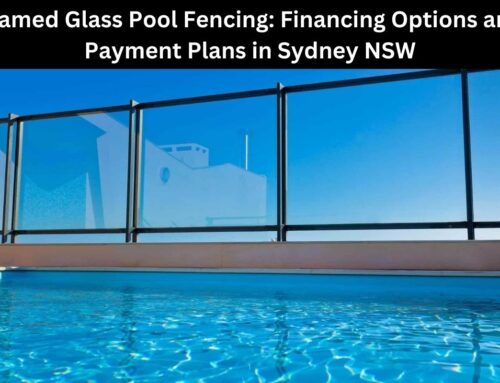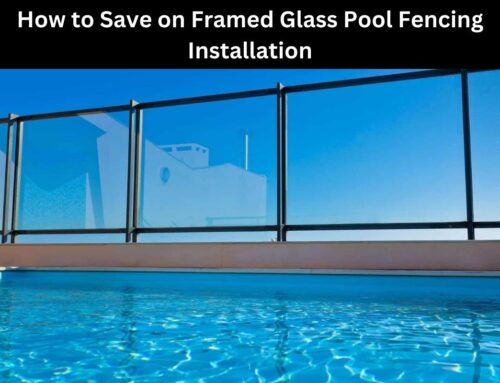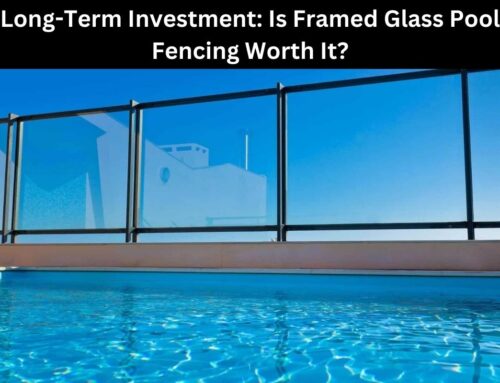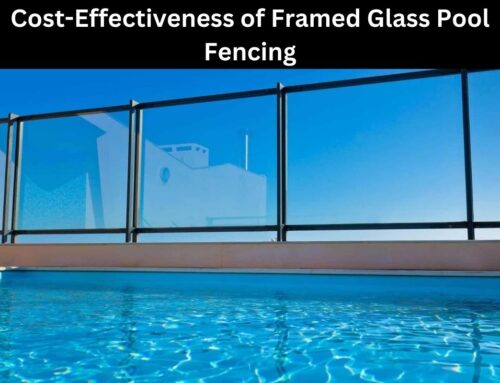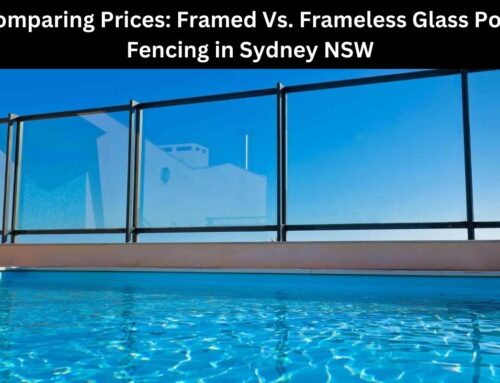Table of Contents
Frameless glass pool fencing is a popular choice for many pool owners in NSW, Australia. Its sleek and modern design not only enhances the aesthetic appeal of the pool area, but also provides a safe and secure barrier.
However, proper installation is crucial to ensure the effectiveness and durability of the fencing. This article will guide you through the installation process of frameless glass pool fencing, adhering to the legal requirements in NSW.
By selecting the right materials, planning the layout and design, preparing the installation area, and following the correct installation techniques, you can create a stylish and safe pool enclosure.
Additionally, we will discuss the final steps and safety considerations to ensure that your frameless glass pool fencing complies with the highest standards of safety.
Whether you are a pool owner or a professional installer, this article will equip you with the necessary knowledge to successfully install frameless glass pool fencing in NSW, Australia.
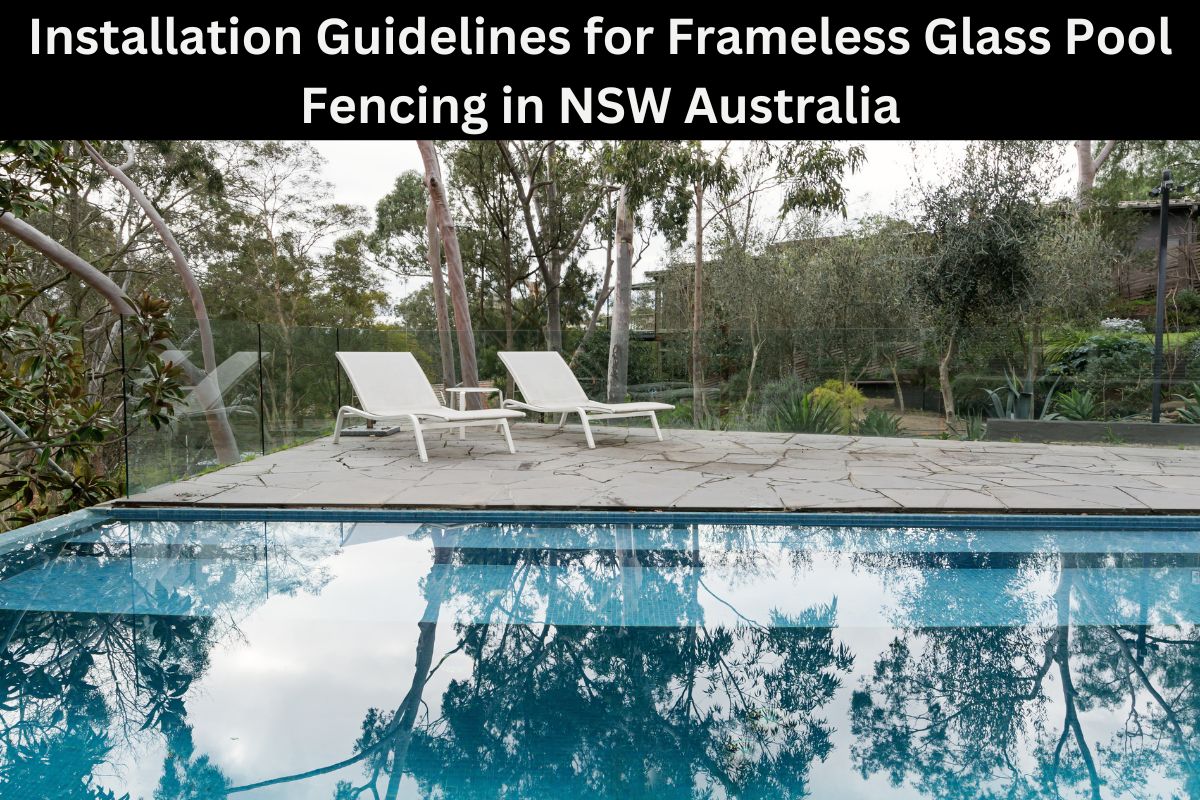
Key Takeaways
- Proper installation is crucial for the effectiveness and durability of frameless glass pool fencing in NSW, Australia.
- Legal requirements, including height, gap size, and self-closing gates, must be followed for pool fencing in NSW.
- Selecting high-quality tempered glass panels and stainless steel hardware is important for durability and resistance to corrosion.
- Planning the layout and design of the fence, including the positioning of the gate, is necessary for safety and aesthetics.
Legal Requirements for Pool Fencing in NSW, Australia
Legal requirements for pool fencing in NSW, Australia must be strictly adhered to in order to ensure the safety of individuals and comply with regulations. These requirements are in place to prevent accidents and protect vulnerable individuals, such as children, from drowning in pools.
According to the regulations set by the New South Wales government, all private swimming pools must have a compliant pool fence that meets specific criteria. The fence must be at least 1200mm in height, with no gaps exceeding 100mm, and must not have any climbable objects near it. Self-closing and self-latching gates are also mandatory, and the latch must be positioned at least 1500mm above the ground level to prevent easy access by young children. Regular inspections and maintenance are required to ensure that the fence remains in good condition and continues to meet safety standards.
By adhering to these legal requirements, pool owners can create a safe environment for themselves, their families, and visitors.
Selecting the right materials for frameless glass pool fencing is the next crucial step in ensuring pool safety and will be discussed in the following section.
Selecting the Right Materials for Frameless Glass Pool Fencing
When selecting materials for frameless glass pool fencing, it is crucial to choose high-quality tempered glass panels. Tempered glass is stronger and more durable than regular glass, making it ideal for withstanding the outdoor elements and potential impact.
Additionally, deciding on stainless steel hardware is recommended as it provides superior strength and resistance against corrosion.
Lastly, considering additional safety features such as self-closing hinges can enhance the overall functionality and security of the pool fence.
Choosing high-quality tempered glass panels
To ensure the selection of durable and reliable materials, it is crucial to carefully consider the quality of tempered glass panels when opting for frameless glass pool fencing in NSW, Australia. Tempered glass is a type of safety glass that undergoes a process of heating and rapid cooling, resulting in increased strength and resistance to breakage. When choosing tempered glass panels, it is important to look for those that meet Australian standards for pool safety, such as AS 1926.1-2012. These standards ensure that the glass panels are of a suitable thickness and have been tested to withstand the impact of a certain force. Additionally, high-quality tempered glass should be free from any visible defects or imperfections, such as chips or cracks, as these can compromise the structural integrity. By selecting high-quality tempered glass panels, homeowners can ensure the safety and longevity of their frameless glass pool fencing. In the next section, we will discuss the importance of deciding on stainless steel hardware in conjunction with the glass panels.
Deciding on stainless steel hardware
Stainless steel hardware plays a crucial role in ensuring the stability and durability of the frameless glass pool fencing system. As a key component, the hardware must be of high quality to withstand the harsh outdoor conditions and provide long-lasting support. Stainless steel is an ideal material choice due to its corrosion resistance, strength, and aesthetic appeal. It offers superior durability compared to other materials, ensuring the fencing system remains sturdy and secure.
Additionally, stainless steel hardware provides a sleek and modern look that complements the transparent nature of the glass panels. To further enhance safety, it is important to consider additional features like self-closing hinges. These features ensure that the pool gate automatically closes and latches after use, reducing the risk of accidental access to the pool area.
Considering additional safety features like self-closing hinges
Considering additional safety features such as self-closing hinges enhances the overall security of the pool area and reduces the chances of accidental access.
Self-closing hinges are designed to automatically close the gate after it has been opened, ensuring that the pool area remains securely enclosed at all times. These hinges are typically made from durable materials such as stainless steel, which provides resistance against rust and corrosion, ensuring their longevity and reliability.
Additionally, self-closing hinges can be adjusted to control the speed at which the gate closes, allowing for customization based on individual preferences and safety requirements.
By incorporating self-closing hinges into the design of a frameless glass pool fence, homeowners can greatly enhance the safety of their pool area and provide peace of mind for themselves and their families.
Planning the layout and design of your pool fence further ensures a comprehensive and effective safety solution for your pool area.
Planning the Layout and Design of Your Pool Fence
When designing your pool fence, it is important to carefully plan the layout and design to ensure a safe and aesthetically pleasing result. The layout of your pool fence should take into consideration the specific requirements set forth by the NSW Australia regulations for pool safety. These regulations outline the minimum height, spacing between panels, and gate requirements that must be met.
Additionally, it is important to consider the overall design of the fence to ensure it complements the surrounding environment and does not obstruct any views.
One key aspect to consider when planning the layout is the placement of the gate. The gate should be easily accessible and positioned in a way that allows for convenient entry and exit to the pool area. It is recommended to have the gate located away from any potential hazards, such as stairs or slopes, to minimize the risk of accidents.
Another important consideration is the spacing between panels. The NSW Australia regulations specify that there should be no gap larger than 100mm between panels to prevent small children from squeezing through. Additionally, it is essential to ensure that the fence is secure and free from any potential gaps or weak points that could compromise its effectiveness.
Careful planning of the layout and design of your pool fence is crucial to ensure both safety and aesthetic appeal. The next section will discuss the necessary steps for preparing the installation area without compromising the safety of the fence.
Preparing the Installation Area
When preparing the installation area for a frameless glass pool fence, it is important to clear the area of debris and obstacles to ensure a safe and unobstructed installation.
Additionally, it is crucial to ensure a level and stable foundation for the fence to maintain its structural integrity. This may require making necessary adjustments to the terrain, such as leveling uneven ground or reinforcing unstable areas.
Clearing the area of debris and obstacles
To ensure a safe and efficient installation process, it is imperative to meticulously clear the area of any debris and obstacles. This will allow the installation team to navigate the space with ease and precision, much like a skilled sculptor meticulously clearing away excess stone to reveal the hidden beauty within.
Removing all debris, such as rocks, branches, and foliage, is crucial to create a clean and accessible area for the frameless glass pool fencing installation. Additionally, obstacles such as furniture, toys, or other objects must be relocated to prevent any hindrance during the installation process.
By diligently removing debris and obstacles, the installation team can ensure that the frameless glass pool fencing will be installed correctly and safely.
With the area cleared, the subsequent section will delve into the importance of ensuring a level and stable foundation for the installation process.
Ensuring a level and stable foundation
A level and stable foundation is crucial for ensuring the structural integrity and longevity of the installation process for the frameless glass pool fencing. To achieve this, it is essential to carefully prepare the area before beginning the installation. Clearing the area of debris and obstacles, as discussed in the previous subtopic, is the first step in this process. Once the area is clear, attention must be given to creating a level and stable foundation. This can be achieved by using a combination of tools and equipment, such as a spirit level and a compacting machine, to ensure that the ground is even and solid. The following table provides a summary of key considerations for establishing a level and stable foundation:
| Considerations | Description |
|---|---|
| Assessing the terrain | Conduct a thorough assessment of the terrain to identify any potential irregularities. |
| Excavation | Remove any excess soil or materials to create a level surface. |
| Compaction | Compact the ground using a compaction machine to ensure stability. |
| Checking for levelness | Use a spirit level to verify that the foundation is even and level. |
By following these guidelines, you can establish a secure foundation for the frameless glass pool fencing installation. Making any necessary adjustments to the terrain can then be addressed, as discussed in the subsequent section.
Making any necessary adjustments to the terrain
Adjustments to the terrain can be made to ensure that it is suitable for the installation of the frameless glass pool fencing. It is crucial to have a level and stable foundation for the fence, as any unevenness in the terrain can compromise the safety and stability of the structure.
Before installation, the terrain should be thoroughly assessed to identify any irregularities such as slopes or bumps. If the terrain is not level, it may be necessary to make adjustments by excavating or filling in certain areas. This can be done using appropriate tools and materials to achieve a smooth and even surface.
By making these necessary adjustments, the terrain can be prepared to provide a secure and stable base for the installation of the frameless glass panels, ensuring the safety of the pool area.
Installing the Frameless Glass Panels
The next step in installing frameless glass pool fencing involves attaching the glass panels to the posts or spigots.
This is done using appropriate hardware to ensure a secure and stable connection.
It is important to check for proper alignment and stability to ensure the panels are correctly installed and meet safety standards.
Attaching the glass panels to the posts or spigots
To securely fasten the glass panels to the posts or spigots, it is essential to follow the recommended installation guidelines.
Start by ensuring that the posts or spigots are firmly anchored in the ground, providing a stable foundation for the panels.
Then, carefully align the glass panels with the posts or spigots, making sure they are level and plumb.
Using appropriate clamps or brackets, attach the panels securely to the posts or spigots, ensuring a tight fit.
It is crucial to use high-quality, corrosion-resistant materials for this step to ensure the long-term stability and safety of the glass fence.
Once the panels are securely attached, you can proceed to the next step of securing the panels with appropriate hardware, which will further enhance their stability and durability.
Securing the panels with appropriate hardware
Securing the glass panels with appropriate hardware is essential for ensuring the long-term stability and safety of the fence, instilling a sense of peace and confidence in the users. The type of hardware used will depend on the specific design and requirements of the glass pool fence. It is crucial to select high-quality hardware that is specifically designed for frameless glass fencing to ensure optimal performance and durability.
To evoke emotion in the audience, consider the following table:
| Hardware Component | Description | Importance |
|---|---|---|
| Spigots | Sturdy metal posts that hold the glass panels in place. | Essential for structural integrity and preventing panel movement. |
| Clamps | Connect the glass panels securely to the spigots. | Ensures panels remain in position, preventing accidents. |
| Bolts | Fasten the clamps firmly to the spigots. | Provides additional stability and prevents loosening over time. |
| Rubber Gaskets | Placed between the glass and hardware to absorb shock and reduce friction. | Enhances safety by minimizing the risk of glass breakage. |
By using appropriate hardware, the glass panels are firmly secured, ensuring a stable and safe pool fence. Checking for proper alignment and stability is the next crucial step in the installation process.
Checking for proper alignment and stability
Checking for proper alignment and stability of the glass panels is a crucial step in ensuring the overall integrity and safety of the fence, as even a slight misalignment can compromise the structural strength and increase the risk of accidents.
Prior to securing the panels with appropriate hardware, it is imperative to carefully inspect each panel to ensure it is perfectly aligned and level. Any deviations from the desired alignment should be corrected immediately.
Additionally, the stability of the panels must be assessed to ensure they are securely in place and resistant to external forces. This can be achieved by applying gentle pressure to each panel and checking for any movement or instability.
Once proper alignment and stability are confirmed, the final steps and safety considerations can be addressed, ensuring a secure and reliable frameless glass pool fence.
Final Steps and Safety Considerations
One important aspect to consider when installing frameless glass pool fencing in NSW Australia is ensuring all safety guidelines are followed to prevent accidents. After checking for proper alignment and stability, there are final steps and safety considerations that need to be taken into account.
Firstly, it is crucial to ensure that the glass panels are securely fixed in place. This can be achieved by using high-quality stainless steel spigots or clamps that are specifically designed for frameless glass pool fencing. These fittings should be installed at regular intervals to provide stability and prevent any movement or dislodgment of the glass panels.
Additionally, it is important to inspect the glass panels for any defects or imperfections. Any scratches, chips, or cracks should be addressed before installation to minimize the risk of breakage. The glass panels should also be free from any sharp edges or corners that could pose a safety hazard.
Furthermore, the height of the glass panels should comply with the relevant safety standards. In NSW Australia, the minimum height requirement for pool fencing is 1200mm. It is essential to ensure that the height is consistent throughout the entire installation to prevent unauthorized access to the pool area.
Lastly, proper signage should be installed to clearly indicate the presence of the pool and any associated safety rules. This can help to raise awareness and promote safety around the pool area.
By following these final steps and safety considerations, the installation of frameless glass pool fencing in NSW Australia can be done in a manner that prioritizes safety and minimizes the risk of accidents.
Crafting Safe Havens with Majestic Glass Frameless Fencing
Trust Majestic Glass to craft your pool area into a safe haven with our outstanding frameless pool fence services in Sydney. We expertly blend safety with elegance, using high-grade glass for both durability and aesthetics. For more insights into our services, explore our main services page. Here we elaborate on our commitment to excellence, our detailed processes, and the distinct benefits of a Majestic Glass frameless pool fence. Our ultimate goal is to transform your pool area into a breathtaking yet secure sanctuary.
Frequently Asked Questions on Installation Guidelines for Frameless Glass Pool Fencing in NSW Australia
How much does frameless glass pool fencing cost?
The cost of frameless glass pool fencing can vary depending on factors such as the size of the pool area and the specific materials used. However, on average, it can range from $200 to $600 per linear meter.
Can frameless glass pool fencing be installed on sloping ground?
Frameless glass pool fencing can be installed on sloping ground by using specialized hardware and techniques. It is crucial to ensure the fence meets safety regulations and is securely anchored to prevent accidents and maintain the structural integrity of the installation.
Are there any height restrictions for frameless glass pool fencing?
There are height restrictions for frameless glass pool fencing, which vary by jurisdiction. These restrictions ensure the safety of individuals, particularly young children, by preventing unauthorized access to the pool area.
Can frameless glass pool fencing be installed on existing concrete?
Yes, frameless glass pool fencing can be installed on existing concrete. Proper installation requires drilling holes into the concrete and using specialized hardware to secure the glass panels, ensuring a safe and sturdy barrier around the pool area.
How do I maintain and clean frameless glass pool fencing?
Maintaining and cleaning frameless glass pool fencing is crucial for safety. Regularly inspect for any damage, clean with non-abrasive solutions, and rinse thoroughly. Avoid using harsh chemicals or abrasive materials that could compromise the integrity of the glass.
Conclusion
In conclusion, when it comes to installing frameless glass pool fencing in NSW, Australia, it is crucial to adhere to the legal requirements and select the appropriate materials.
By carefully planning the layout and design, preparing the installation area, and installing the glass panels correctly, you can create a safe and visually appealing pool fence.
Remember to consider safety considerations and follow the necessary steps to ensure a successful installation.
Just as a frameless glass pool fence adds a touch of elegance to your pool area, following these guidelines will ensure a seamless and secure installation process.
Related Articles
The Role of Building Codes in Frameless Glass Pool Fencing in NSW Australia

